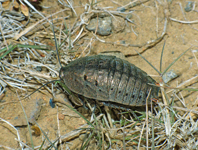Abstract
There are currently only eleven species of Quasipaa (Anura: Dicroglossidae) distributed in southern and southwestern China to central Vietnam, southeastern Thailand, and southwestern Cambodia and presumably also in Laos (Frost 2020). Eight species of Quasipaa are currently known in China: Q. boulengeri (Günther 1889), Q. courtoisi (Angel 1922), Q. exilispinosa (Liu & Hu 1975), Q. jiulongensis (Huang & Liu 1985), Q. shini (Ahl 1930), Q. spinosa (David 1875), Q. yei (Chen, Qu, and Jiang 2002), and Q. verrucospinosa (Bourret 1937). The first seven species are endemic to China (AmphibiaChina 2020). These species have similar morphological traits and are capable of introgressive hybridization between the closely related species of this genus(Zhang et al. 2018). Despite the detailed acoustic analysis that is available to identify a variety of species and is beneficial to the study of anuran taxonomy (e.g., Microhyla species; Chen et al. 2020), advertisement calls have only been reported in detail for Q. spinosa (Yu & Zheng 2009; Chen et al. 2012; Shen et al. 2015) and Q. shini (Kong et al. 2016), whereas the call for Q. exilispinosa was briefly described from observations in captivity (Voitel 2000).
References
AmphibiaChina (2020) The database of Chinese amphibians. Kunming Institute of Zoology (CAS), Kunming, Yunnan. Available from: http://www.amphibiachina.org/ (accessed 1 June 2020)
Ahl, E. (1930) Beiträge zur Lurch- und Kriechtierfauna Kwangsi’s. 3. Frösche.. Sitzungsberichte der Gesellschaft Naturforschender Freunde zu Berlin, 1930, 315–319.
Boersma, P. & Weenink, D. (2020) Praat: doing phonetics by computer. Version 6.1.15. Available from: http://www.praat.org/ (accessed 20 May 2020)
Bourret, R. (1937) Notes herpétologiques sur l’Indochine française. XIV. Les batraciens de la collection du Laboratoire des Sciences Naturelles de l’Université. Descriptions de quinze especes ou variétés nouvelles. Annexe au Bulletin Général de l’Instruction Publique, Hanoi, 1937, 5–56.
Chen, P., Zheng, R.Q., Huang, H., Yu, X.Y. & Xu, Z.W. (2012) Mating call of Paa spinosa is related to temperature but not to body size. Sichuan Journal of Zoology, 31, 513–517.
Chen, X.H., Qu, W.Y. & Jiang, J.P. (2002) A new species of the subgenus Paa (Feirana) from China. Herpetologica Sinica, 9, 230.
Chen, Z.Q., Lin, Y.F., Tang, Y., Ding, G.H., Wu, Y.Q. & Lin, Z.H. (2020) Acoustic divergence in advertisement calls among three sympatric Microhyla species from East China. PeerJ, 8, e8708.
https://doi.org/10.7717/peerj.8708
David, A. (1872 ‘1871’) Rapport adressé a MM. les Professeurs-Administráteurs du Museum d’histoire naturelle. Nouvelles Archives du Muséum d’Histoire Naturelle, Paris, 7, 75–100.
Ding, G.H., Chen, Z.Q., Tang, Y., Zhang, W.C. & Ji, X. (2020) The advertisement call of the moustache toad Leptobrachium liui Pope, 1947 (Anura: Megophryidae) from eastern China. Zootaxa, 4732 (4), 5852–588.
https://doi.org/10.11646/zootaxa.4732.4.8
Fei, L., Ye, C.Y. & Jiang, J.P. (2012) s.n. In: Colored atlas of Chinese amphibians and their distributions. Sichuan Science and Technology Publishing House, Chengdu, China, pp. 462–463.
Frost, D.R. (2020) Amphibian species of the world: An Online Reference, version 6.0. American Museum of Natural History, New York. Available from: http://research.amnh.org/herpetology/amphibia/index.php/ (accessed 1 June 2020)
Günther, A.C.L.G. (1889) Third contribution to our knowledge of reptiles and fishes from the upper Yangtze-Kiang. Annals and Magazine of Natural History, Series 6, 4 (21), 218–229.
https://doi.org/10.1080/00222938909460506
Huang, Z.Y. & Liu, B.H. (1985) A new species of the genus Rana from Zhejiang, China. Journal of Fudan University (Natural Science), 24, 235–237.
Köhler, J., Jansen, M., Rodríguz, A.R., Kok, P.J.R., Toledo, L.F., Emmrich, M., Glaw, F., Haddad, C.F.B., Rödel, M.O. & Vences, M. (2017) The use of bioacoustics in anuran taxonomy: theory, terminology, methods and recommendations for best practice. Zootaxa, 4732 (1), 1–124.
https://doi.org/10.11646/zootaxa.4251.1.1
Kong, S.S., Zheng, R.Q. & Zhang, Q.P. (2016) The advertisement calls of Quasipaa shini (Ahl, 1930) (Anura: Dicroglossidae). Zootaxa, 4205 (1), 87–89.
https://doi.org/10.11646/zootaxa.4205.1.8
Liu, C.C. & Hu, S.Q. (1975) Report on three new species of Amphibia from Fujian Province. Acta Zoologica Sinica, 21, 265–271.
Shen, B., Chen, P., Zheng, R.Q., Min, J.J., Dong, B.J. & Zhao, M.M. (2015) Geographic variation in the advertisement calls of the giant spiny frog (Paa spinosa). Acta Ecologica Sinica, 35, 39–45.
https://doi.org/10.1016/j.chnaes.2015.01.001
Voitel, S. (2000) Beobachtungen bei der Vermehrung von Paa exilispinosa. Elaphe, 8, 11–15.
Yu, B.G. & Zheng, R.Q. (2009) The advertisement call of the giant spiny frog Paa spinosa. Current Zoology, 55, 411–415.
https://doi.org/10.1093/czoolo/55.6.411
Zhang, Q.P., Hu, W.F., Zhou, T.T., Kong, S.S., Liu, Z.F. & Zheng, R.Q. (2018) Interspecies introgressive hybridization in spiny frogs Quasipaa (Family Dicroglossidae) revealed by analyses on multiple mitochondrial and nuclear genes. Ecology and Evolution, 8, 1260–1270.
https://doi.org/10.1002/ece3.3728


